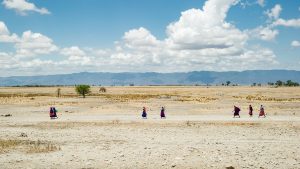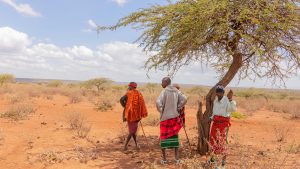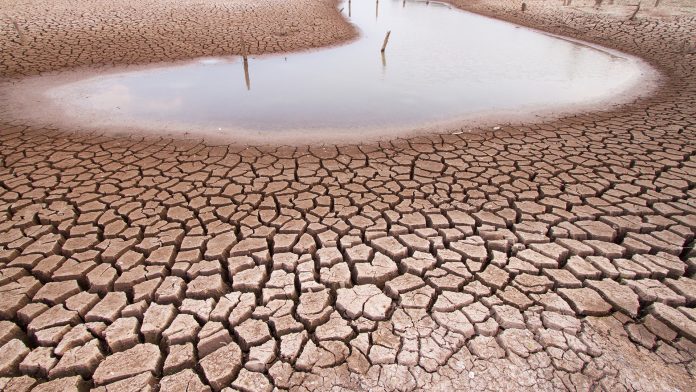Researchers have developed a new drought prediction model for the Eastern Horn of Africa to allow for preparation measures to be implemented, minimising disaster.
Scientists from the University of California – Santa Barbara (UCSB) have developed a climate model that is able to predict droughts that cause severe food insecurity in the Eastern Horn of Africa. The drought prediction model provides months-long lead times that allow for measures to be taken that can help millions of the region’s farmers prepare for and adapt to the lean seasons.
“We’ve gotten very good at making these predictions,” said climate scientist Chris Funk, director of UCSB’s Climate Hazards Centre, a multidisciplinary alliance of scientists who work to predict droughts and food shortages in vulnerable areas.
The work, ‘Tailored Forecasts Can Predict Extreme Climate Informing Proactive Interventions in East Africa,’ is published in the journal Earth’s Future.
The Eastern Horn of Africa is experiencing devastating droughts
In 2020, the Climate Hazards Centre (CHC) predicted that climate change would interact with naturally occurring La Niña events, bringing devastating sequential drought to the Eastern Horn of Africa.
The region normally has two wet seasons a year – spring and autumn. An unprecedented five rainy seasons in a row failed, however.
Eight months before each of those failures, the CHC predicted droughts. Agencies used this drought prediction model and took effective action, raising hundreds of millions of dollars in assistance for millions of starving people.
These efforts were a long distance away from similar predictions of sequential droughts that the researchers made for the same region ten years earlier, in collaboration with the USAID-supported Famine Early Warning Systems Network.

The predictions went largely unheard. “More than 250,000 Somalis died,” Funk said. “It was just really horrible.”
Available forecasts were not able to predict rainfall deficits in this region at this time. While the models said that East Africa would become wetter, observations revealed significant declines in the spring wet season. The group’s long-range drought prediction model was still in its infancy.
“We made an accurate forecast, but we didn’t understand very well what was going on scientifically,” Funk said.
“Now, following our success in 2016/17, and extensive outreach efforts, the humanitarian relief community appreciates the value of our early warning systems.”
Understanding the mechanisms behind drought in the Eastern Horn of Africa
In the last ten years, the researchers have worked to understand the mechanism that drives drought in the Eastern Horn of Africa. From this, they have created accurate and tailored forecasts for the region, developing a drought prediction model.
The model was built on research showing that increased rainfall around Indonesia, caused by anthropogenic increases in sea surface temperatures, resulted in less moisture flowing on to the East African coast during the rainy months. The change in moisture flows cause continuous droughts.
As climate change increases western Pacific sea surface temperatures, drought prediction is becoming more and more possible.
“We’ve published about 15 scientific papers on this topic,” Funk said, “and we’ve forecasted dry seasons in 2016-2017, which helped prevent a famine that year.”
According to Funk, climate change amplifies natural sea surface temperature variations, which opens the door to better forecasts.
Opportunities of long-range climate outlooks
“To reduce the impacts of climate extremes, we need to look for opportunities,” said CHC Specialist and Operations Analyst Laura Harrison.
“We need to pay attention to not just how climate is changing, but how these changes can support more effective predictions for droughts and for advantageous cropping conditions. As a community, we also need to foster communication about successful resilience strategies.”
Now, with their drought prediction model, extreme ocean states can be forecast at eight-month lead times. As well as this, weather forecasts can make projections at two weeks and at 45 days.

From this information, the team can provide actionable information to collaborators on the ground to help local farmers anticipate and plan for dry conditions.
“We’re working with a group called Plant Village, which is providing agricultural advisories to millions of Kenyans, and helping them take actions that can help make their crops more drought-resistant,” Funk said.
The drought prediction model can help develop a wider climate change strategy
The team hopes that the proactivity provided by the drought prediction model will become a bigger part of the climate change strategy for the Eastern Horn of Africa.
A better local understanding of the mechanisms behind droughts and investments in early warning systems may have an initial cost, but “are relatively inexpensive when compared to post-impact, response-based alternatives such as humanitarian assistance and/or funding safety-net programs.”
Education and participation ultimately increase resilience.
“Understanding that climate change makes extremes more frequent is really empowering because now we can try to anticipate those bad effects,” Funk said.
“Flooding still happens, drought still happens, people still get hurt, but we can try to reduce the harm.”





